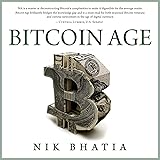In the dynamic landscape of modern finance, few strategies have captivated attention quite like that of MicroStrategy, now simply known as Strategy. Under the visionary leadership of Executive Chairman Michael Saylor, the company has fundamentally redefined its corporate treasury approach, pivoting aggressively into Bitcoin. The accompanying video provides a concise look into this pioneering MicroStrategy Bitcoin strategy, revealing how the firm views the leading cryptocurrency not just as an asset, but as foundational “digital capital” from which innovative “digital credit” instruments can be issued. This shift moves beyond mere accumulation, transforming Bitcoin into the bedrock of a sophisticated financial ecosystem.
MicroStrategy’s journey into Bitcoin began with modest acquisitions, but it has since blossomed into a monumental commitment. The firm has amassed an astounding portfolio of over 628,791 Bitcoins, representing a significant 3% of the total supply that will ever be minted. This substantial holding underscores a profound conviction in Bitcoin’s long-term value proposition and its potential to serve as a superior store of value compared to traditional fiat assets. This strategic pivot has not only positioned MicroStrategy as the world’s largest corporate holder of Bitcoin but has also catalyzed record quarterly profits, defying analyst expectations and reversing previous losses. The core philosophy driving this ambitious accumulation is the belief in Bitcoin as a long-duration asset, capable of delivering a high annualized rate of return (ARR) over decades.
Bitcoin as Core Digital Capital
Michael Saylor articulates a compelling vision: Bitcoin is not merely a speculative commodity but a robust form of “digital capital.” This conceptualization elevates Bitcoin to a status akin to a digital treasury asset, possessing characteristics that make it uniquely suitable for a forward-thinking corporate finance strategy. Historically, companies would hoard cash or invest in low-yield government treasuries to maintain liquidity and stability. However, Saylor argues that such traditional assets are prone to inflation and offer diminishing real returns in an increasingly digital economy. Bitcoin, with its decentralized nature and capped supply, presents a compelling alternative, offering both performance and protection against the erosion of purchasing power.
The inherent volatility of Bitcoin, often cited as a deterrent by conventional investors, is viewed by MicroStrategy as a feature to be managed, not avoided. With an estimated 50% volatility and a 50% ARR over a 50-year duration, Bitcoin is seen as a high-performance asset requiring sophisticated financial engineering. Imagine a company holding a highly appreciated asset that also experiences significant price swings. Rather than simply holding and hoping, MicroStrategy’s strategy involves actively leveraging this digital capital to create value, effectively refining Bitcoin’s raw potential into various structured products tailored for different investor risk appetites. This transformative approach redefines how corporations can view and utilize their treasury assets in the 21st century.
Crafting Digital Credit Instruments from Bitcoin Holdings
The innovation at the heart of MicroStrategy’s strategy lies in its ability to issue “digital credit” instruments against its substantial Bitcoin treasury. This process is akin to traditional financial institutions issuing bonds or preferred stocks against their underlying assets, but with a crucial digital twist. By transforming the raw volatility of Bitcoin into structured, yield-bearing securities, MicroStrategy caters to a broader spectrum of investors, from those seeking amplified Bitcoin exposure to others prioritizing yield and principal protection. This approach allows the company to continuously acquire more Bitcoin while simultaneously providing attractive investment opportunities.
MicroStrategy offers several distinct products, each designed to strip away specific risks or amplify certain aspects of Bitcoin’s performance:
- MSTR Equity: Amplified Bitcoin Exposure
For investors seeking an amplified stake in Bitcoin’s upside, the MicroStrategy (MSTR) equity offers approximately 2x Bitcoin exposure. This appeals particularly to options jockeys and derivatives traders who thrive on leveraged positions, providing a readily accessible way to magnify their potential gains from Bitcoin’s price movements. - Strike (STRK): Structured Bitcoin with Dividends
Strike represents a more structured approach, aiming to attract investors who prefer a blend of upside potential and predictable income. This instrument provides roughly 80% of Bitcoin’s upside while offering a 20% structured dividend, coupled with principal protection. It competes with traditional hedge funds or S&P index investments, offering a compelling alternative for those accustomed to more conventional, yet still high-performing, vehicles. - Stretch: Low Volatility, High Yield, Principal Protected
The latest innovation, Stretch, is perhaps the most intriguing. Positioned as “Treasury Bitcoin,” it targets investors desiring monthly dividends, principal protection, and the lowest possible volatility. Offering an impressive 9% dividend yield, Stretch stands in stark contrast to the average money market yield of 4.2% or even traditional treasuries. This product is designed to compete directly with money markets and government bonds, attracting a conservative investor base with a highly attractive risk-adjusted return.
Each of these digital credit instruments serves a dual purpose: to attract capital that MicroStrategy then uses to purchase more Bitcoin, thus expanding its digital capital base, and to provide diverse investment avenues for various risk appetites.
The Evolution of Corporate Bitcoin Holdings: A Global Movement
The MicroStrategy Bitcoin strategy is not an isolated phenomenon; it is at the forefront of a burgeoning global trend: the “Bitcoin Treasury movement.” Michael Saylor highlighted a significant increase in public companies capitalizing on Bitcoin, rising from approximately 60 last year to over 160 this year. This proliferation signifies a growing recognition among corporate entities worldwide that Bitcoin can serve as a strategic treasury asset, offering advantages that traditional cash or equivalents simply cannot match.
Companies like MetaPlanet in Japan, Capital B in France, SmarterWeb in the UK, and numerous firms in the US (including those by Anthony Pompliano and 21) are adopting similar strategies. They understand that by holding digital capital and issuing digital credit, they can generate value and strengthen their balance sheets in a rapidly evolving financial landscape. This movement is not just about holding Bitcoin; it’s about integrating it into core financial operations and developing innovative ways to derive value from it. Imagine a future where a significant portion of corporate treasuries globally is held in Bitcoin, signaling a fundamental shift in how businesses manage capital and drive shareholder value. This collective embrace of Bitcoin underscores its increasing legitimacy and utility as a global reserve asset.
Strategic Advantages of MicroStrategy’s Approach
MicroStrategy’s pioneering strategy offers several strategic advantages, both for the company and for the broader financial ecosystem. By continuously converting its digital capital into digital credit and reinvesting the proceeds into more Bitcoin, the company creates a powerful flywheel effect. This enables rapid expansion of its Bitcoin holdings, which in turn bolsters its ability to issue more attractive credit instruments. The confidence in Bitcoin’s long-term appreciation, with Saylor forecasting a 30% annual ARR over 20 years, underpins this aggressive, yet calculated, strategy.
Furthermore, this model provides conventional investors with diversified exposure to Bitcoin, tailored to their specific risk-reward profiles. While direct Bitcoin investment can be daunting due to its volatility, MicroStrategy’s structured products offer pathways to participate in its growth with varying degrees of risk mitigation and income generation. This approach also positions MicroStrategy as a financial innovator, demonstrating a viable model for monetizing digital assets and bridging the gap between traditional finance and the emerging digital economy. It showcases how a forward-thinking corporation can leverage blockchain technology to create unique value propositions, fostering a more robust and resilient financial future.
The Future of Digital Capital: Demonetizing Traditional Assets
Michael Saylor believes Bitcoin is actively “demonetizing” a wide array of traditional assets globally. This includes foreign real estate, private equity, public equity, and various other store-of-value assets. His argument is that 20th-century physical, analog assets are giving way to 21st-century digital assets. For corporations like Apple or Microsoft, which are restricted from buying broad market indexes, parking capital in fiat currency is increasingly inefficient. Gold and real estate, while tangible, present liquidity and custody challenges that digital Bitcoin largely overcomes.
The ongoing shift towards digital capital is not merely a technological upgrade; it represents a fundamental re-evaluation of what constitutes sound money and a reliable store of value. As more companies and individuals recognize the diminishing returns and inflationary pressures associated with fiat currencies and traditional assets, the appeal of a decentralized, digitally scarce asset like Bitcoin grows. This long-term trend, according to Saylor, will continue to drive capital into Bitcoin, cementing its role as the dominant digital treasury asset for corporations and investors alike. The MicroStrategy Bitcoin strategy is a testament to this profound shift, laying a blueprint for how businesses can thrive by embracing the future of finance.







